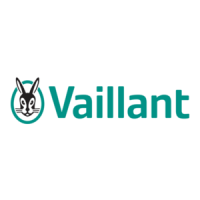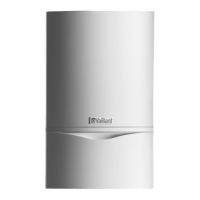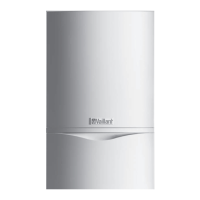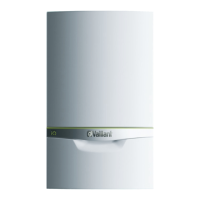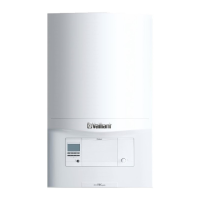0020244997_07 Installation and maintenance instructions 51
Appendix
A Inspection and maintenance work
The table below lists the manufacturer requirements with respect to minimum inspection and maintenance intervals. If na-
tional regulations and directives require shorter inspection and maintenance intervals, you should observe these instead of
the intervals listed. Each time inspection and maintenance work is carried out, carry out the required preparatory and com-
pletion work.
# Maintenance work Interval
1 Record all of the analysis results in the Benchmark Checklist in these
instructions
Annually
2 Ask the end user whether any significant problems occur when operating
the product
Annually
3 Use the diagnostics system to check the product's fault history Annually
4 Visually inspect whether the air/flue pipe and its opening have been in-
stalled correctly in accordance with the set-up instructions
Annually
5 Check that the unit has been installed correctly and the connections have
been secured
Annually
6 Check that the condensate pipe is in good condition, that it is leak-tight
and that the drain is correct
Annually
7 Check whether all of the externally routed condensate pipes are dimen-
sioned correctly and have been insulated sufficiently (frost protection)
Annually
8 Check whether the gas flow rate corresponds with the specifications on
the data plate and lies within the tolerances specified in these instructions
Annually
9 If the gas flow rate lies outside of the tolerances specified in these in-
structions, eliminate the fault in accordance with the regulations and the
current technology
Annually
10 Check the general condition of the product and, if required, eliminate any
faults that are found
Annually
11 Carry out the combustion analysis: Measure the CO content, CO₂ content
and the CO/CO₂ ratio. For products with a rear air/flue connection: The
combustion analysis can only be carried out when the unit casing has
been removed; it is not necessary to test these products for flue gas recir-
culation
Annually
12 Check the product's recirculation at the supply air test point on the air/flue
pipe. If required, inspect the entire air/flue system and, if necessary, cor-
rect the fault
Annually
13 Disconnect the product from the electrical installation Annually
14 Check and, if required, correct the electrical installation Annually
15 Removing dirt from the product and the vacuum chamber Annually
16 Visually check the heat cell to ascertain its condition and detect any cor-
rosion, rust or damage, and carry out maintenance work, if required
Annually
17 Check that the gas stopcock and service valves function correctly Annually
18 Check the quality of the heating water: Clarity (clouding), correct inhibitor
and pH value
Annually
19 Removing the compact thermal module at regular intervals
42
20 Check the burner for damage at regular intervals
21 Checking the insulating mats in the combustion area and replacing dam-
aged insulating mats
at regular intervals
22 Cleaning the heat exchanger at regular intervals
43
23 Cleaning the condensate trap Annually
44
24 Filling the condensate trap Annually
34
25 Installing the compact thermal module at regular intervals
44
26 Checking the pre-charge pressure of the expansion vessel at regular intervals
27 Cleaning the strainer in the cold water inlet at regular intervals
44
28 Check the impeller sensor for dirt/damage at regular intervals
29 If the water volume is insufficient (domestic hot water) or the outlet tem-
perature is insufficient, check the secondary heat exchanger
at regular intervals
30 Reassemble the product After each time maintenance
work is carried out
31 Opening the service valves Annually
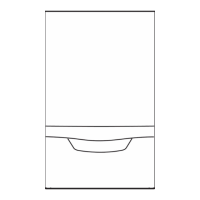
